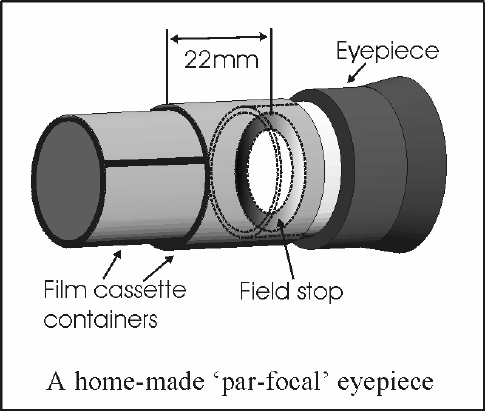
Handbook for SXV-M5C Issue 1 August 2004
10
When the par-focal eyepiece is fitted into the telescope drawtube, you can adjust the
focus until the view is sharply defined and the object of interest is close to the field
centre. On removing the eyepiece and fitting the CCD camera, the CCD will be very
close to the focal plane of the telescope and should record the stars etc. well enough
for the focus to be trimmed to its optimum setting
Several astronomical stores sell par-focal eyepieces, but you can also make your own
with a minimum of materials and an unwanted Kellner or Plossl ocular.
Just measure a distance of 22mm from the field stop of the eyepiece (equivalent to the
CCD to adaptor flange distance of the camera) and make an extension tube to set the
field stop at this distance from the drawtube end. Cut-down 35mm film cassette
containers are a convenient diameter for making the spacer tube and may be split to
adjust their diameter to fit the drawtube.
Another popular solution to the ‘find and focus’ problem is the ‘flip mirror’ unit.
These operate on a similar principle to the single lens reflex camera, where a hinged
mirror can drop into the light path and reflect the image through 90 degrees into a
viewing eyepiece.
In this case, the camera and eyepiece are made par-focal with each other by locking
up the mirror, focusing the camera on an easy object, such as a moderately bright star
and then flipping the mirror down to view the same star with the eyepiece. Once the
eyepiece has been locked into the correct position, you can use it to focus on the
image by lowering the flip mirror and operating the telescope focus wheel until the
image is sharp. When the mirror is raised, the image will fall onto the CCD surface
and should be accurately in focus. Most flip mirror units allow several adjustments to
be made, so that the image can be centred properly in the eyepiece and CCD fields,
which are not necessarily coincident when you first buy your unit!


















